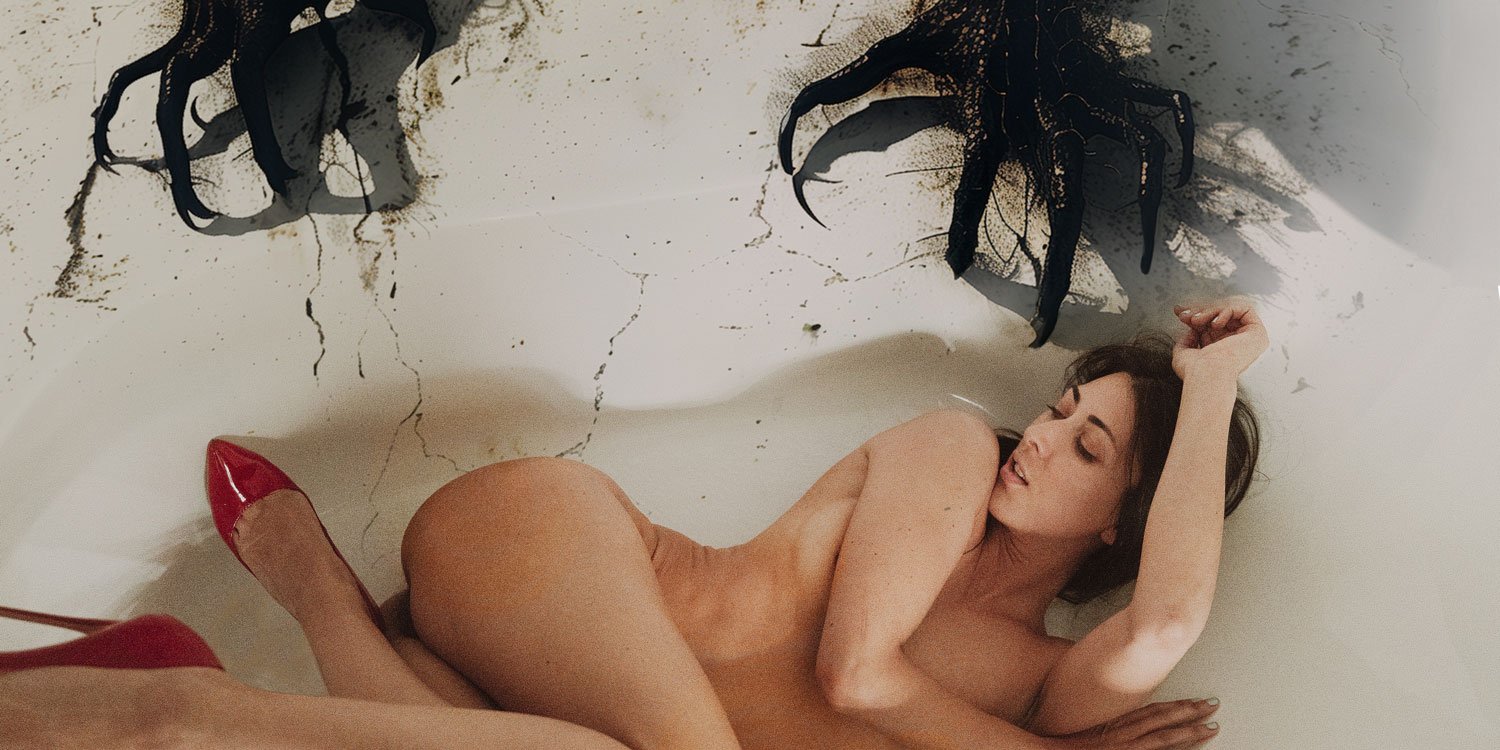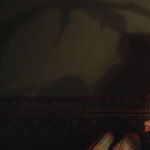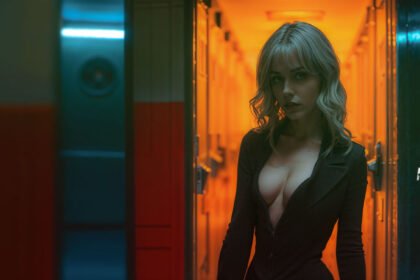“The Goblin Queen and Her Nightmares” is a multifaceted erotica horror story that gets you involved with the intense psychological struggles of Brett, an artist tormented by vivid nightmares. These nightmares blur the lines between reality and delusion, plunging her into a surreal and terrifying world where she must fight for her sanity and identity. The narrative is rich with symbolism, exploring themes of mental anguish, the quest for control, and the use of sensuality as a coping mechanism. Additionally, the story subtly reflects the broader themes of greed and imbalance present in DangerCity, a world where crime and violence are rampant.
- Thematic Elements and Symbolism
- Distinguishing Reality from Hallucination
- Coping Mechanisms
- Key Questions Addressed
- Questions and Answers
- What exactly is happening in the section where Brett sees claws instead of fingers?
- Why does Brett grab the sword by her door?
- What does the red moon represent?
- Is Brett supposed to kill the goblins?
- Is Brett killing a monster or a man in the passage where she cuts off the creature’s hand?
- Is Brett still in her nightmare during the section where she feels safer with the soap and water?
- Did Brett find out she murdered people she dreamed of?
- What is happening in the section where Brett throws up in the bathroom?
- Is the monster trying to get food out of Brett’s throat, and is she eating it in turn?
- Are all the new creatures Brett is killing part of the goblins?
- What is happening in the section where Brett masturbates in the bathroom?
- What does the wasteland in Brett’s nightmares symbolize?
- How does Brett’s art help her cope with her nightmares?
- Why does Brett decide to become a doll?
Thematic Elements and Symbolism
Nightmares as Reflections of Reality
The wasteland in Brett’s nightmares symbolizes the greed and unbalance prevalent in DangerCity. This environment mirrors the chaotic, crime-ridden streets of The Fringe, where violence is tolerated as long as it does not affect The Core. The desolate landscape in her dreams, filled with half-rotted buildings and sharp, prickly plants, represents the moral decay and the pervasive hunger for power and survival in her world. The moon filling with blood is a direct metaphor for the increasing violence and bloodshed, illustrating how the city’s relentless pursuit of more—be it power, control, or survival—breeds further chaos and destruction.
Brett’s Psychological Struggles
Brett’s journey through her nightmares and her attempts to navigate reality highlight her deep-seated psychological issues. Her hallucinations of goblins and monstrous creatures reflect her inner fears and anxieties. The goblins, in particular, symbolize the invasive and consuming nature of these fears. They demand to be fed, representing the insatiable hunger for more that characterizes both her nightmares and the societal dynamics of DangerCity.
- The Sword:
- The sword in Brett’s hallucinations is a powerful symbol of survival and control. Initially, it represents her desperate need to protect herself and assert dominance in a hostile environment. As the narrative progresses, the sword’s fusion with her arm signifies the loss of her autonomy and the merging of her identity with the violence and fear that define her nightmares.
- The Red Moon:
- The red moon symbolizes the culmination of violence and the impending doom that Brett feels. Its transformation from gold to red as she kills more reflects the escalating bloodshed and the apocalyptic vision of total destruction if the cycle of violence continues unchecked.
Distinguishing Reality from Hallucination
Throughout the story, Brett grapples with distinguishing reality from her nightmares. Her intense hallucinations and the physical sensations they evoke blur these boundaries, making it difficult for her to discern what is real.
- Initial Perceptions and Shifts:
- Brett’s initial perception of the monstrous creatures she encounters as beasts, followed by a sudden realization that they are human, underscores her distorted reality. This shift highlights her struggle to maintain a grip on sanity as her nightmares intrude upon her waking life.
- The Radio Incident:
- The radio broadcast detailing murders with characteristics matching Brett’s hallucinations adds to her confusion. This moment suggests that her violent actions in her nightmares might have real-world consequences. However, the subsequent realization that the broadcast was likely a hallucination reflects her ongoing battle with psychosis.
Coping Mechanisms
Brett’s use of sensuality and eroticism serves as a grounding force, providing temporary relief from her mental torment. The act of masturbation becomes a way for her to reclaim control over her body and anchor herself in reality.
- Sensual Imagery:
- By imagining a human touch instead of the violent goblins, Brett finds solace and a sense of normalcy. Her desire for physical pleasure, even if it comes from objectification, highlights her need for human connection and escape from the horrors of her mind.
- Art as Therapy:
- Brett turns to painting as a means of processing her nightmares. By trapping her fears on the canvas, she seeks to externalize and control them, preventing them from bleeding into her reality.
Key Questions Addressed
- The Sword and Its Symbolism:
- Brett’s hallucination of the sword fused with her arm symbolizes her loss of control and the merging of her identity with the violence that defines her nightmares.
- Killing the Creatures:
- Brett’s actions against the new creatures, initially perceived as beasts but later realized to be human, illustrate her struggle to distinguish reality from delusion. Her violent reactions underscore her desperation and the depth of her mental breakdown.
- The Radio Broadcast:
- The radio incident highlights the blurring of reality and hallucination. The broadcast, which details murders matching Brett’s hallucinations, suggests her actions might have real-world consequences. However, her subsequent realization that it was likely a hallucination reflects her ongoing battle with psychosis.
- The Role of Sensuality:
- Brett’s use of masturbation and her fantasies of human touch serve as coping mechanisms. These acts provide temporary relief and help her reclaim control over her body, offering a fleeting escape from her mental torment.
Conclusion
“The Goblin Queen and Her Nightmares” is a haunting exploration of the psychological struggles of Brett, a woman tormented by vivid and terrifying hallucinations. Through rich symbolism and intense imagery, the story delves into themes of mental anguish, the quest for control, and the use of sensuality as a coping mechanism. The narrative also reflects broader societal themes of greed and imbalance in DangerCity, drawing parallels between Brett’s internal struggles and the external chaos of her world. Ultimately, the story highlights the thin boundaries between reality and delusion, illustrating the devastating impact of mental illness on perception and identity.
Questions and Answers
What exactly is happening in the section where Brett sees claws instead of fingers?
Brett is experiencing a vivid hallucination where she perceives her hands as grotesque and monstrous. This reflects her sense of losing her humanity and becoming something horrific, symbolizing her deep-seated fears and anxieties.
Why does Brett grab the sword by her door?
The sword symbolizes her need for survival and control. In her nightmare, she feels an instinctual compulsion to protect herself from the goblins and assert dominance. The sword’s fusion with her arm further symbolizes her loss of autonomy and the merging of her identity with the violence and fear that dominate her nightmares.
What does the red moon represent?
The red moon symbolizes the culmination of violence and impending doom. As Brett kills more, the moon gets redder, representing escalating bloodshed. The moon filling with blood signifies an apocalyptic scenario where continued violence leads to total destruction.
Is Brett supposed to kill the goblins?
The narrative is ambiguous about whether Brett is meant to kill the goblins. The goblins demand to be fed, which could imply providing them with victims. Brett’s violent actions seem driven by a primal survival instinct, highlighting her internal conflict and desperation.
Is Brett killing a monster or a man in the passage where she cuts off the creature’s hand?
Initially, Brett perceives the creature as a monstrous beast. However, a shift in her perception reveals it to be a human man. This indicates that her hallucinations have distorted reality, and she might have actually murdered a person.
Is Brett still in her nightmare during the section where she feels safer with the soap and water?
No, Brett is not in her nightmare. The sensory experiences of soap and water help anchor her back to reality. She confirms her control over her body through small actions, indicating she has transitioned to a more stable state.
Did Brett find out she murdered people she dreamed of?
Brett is confronted with evidence that suggests her nightmarish actions might have real-world consequences. The radio broadcast detailing murders with characteristics matching her hallucinations adds to her confusion. However, her realization that the broadcast might be a hallucination indicates ongoing psychotic issues.
What is happening in the section where Brett throws up in the bathroom?
Brett vomits, expecting to see remnants of violence but finds only bile and food. This discrepancy leads her to question the reality of her experiences, considering the possibility of a psychotic break. She decides to become a doll to manage her condition, seeking a controlled environment to prevent harm.
Is the monster trying to get food out of Brett’s throat, and is she eating it in turn?
The monster is making a proposition for pleasure in exchange for food, trying to manipulate Brett. She rejects the offer violently, seeing it as a threat to her meal and authority. She kills and consumes the creature, reinforcing her dominance and survival instincts.
Are all the new creatures Brett is killing part of the goblins?
No, the new creatures are distinct from the goblins. They represent additional threats in her nightmarish realm, highlighting the chaotic and unpredictable elements Brett must navigate and overcome.
What is happening in the section where Brett masturbates in the bathroom?
Brett uses masturbation as a means to ground herself in reality and escape her mental torment. By imagining a human touch instead of goblins, she finds comfort and control. This act helps her reclaim her body and sanity, providing temporary relief from her nightmares. She envisions a future where she can maintain this escape, even if it means becoming a doll for others’ pleasure.
What does the wasteland in Brett’s nightmares symbolize?
The wasteland symbolizes the greed and imbalance in DangerCity. It mirrors the chaotic, crime-ridden streets of the Fringe, representing moral decay and the pervasive hunger for power and survival.
How does Brett’s art help her cope with her nightmares?
Brett turns to painting as a therapeutic outlet. By trapping her fears on the canvas, she seeks to externalize and control them, preventing them from bleeding into her reality. This act of creation provides a sense of control and a way to process her trauma.
Why does Brett decide to become a doll?
Brett decides to become a doll as a way to gain control over her life and prevent herself from harming others. She sees this as a structured, controlled environment that could help manage her condition and provide a semblance of stability and safety.

















